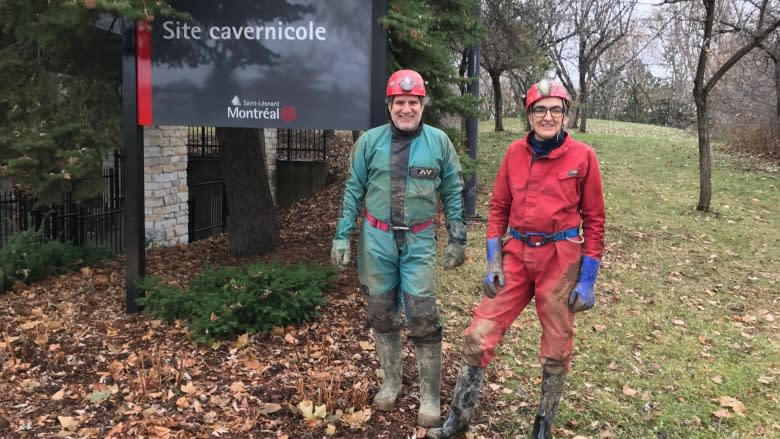'This is a major discovery': Explorers find massive ice-age cavern beneath Montreal
Explorers have just discovered a new underground passage, complete with stalactites and a lake, all buried beneath the city of Montreal — and they don't know where it ends yet.
Until a couple of months ago, no one had ever set foot inside.
CBC crews were among the first people who had the chance to explore the cathedral-like chamber, which was formed more than 15,000 years ago during the ice age.
The spectacular find is connected to Montreal's Saint-Léonard Cavern, which lies underneath Parc Pie XII, not far from Highway 40.
The main portion of the cavern has been open to members of the public for decades, but tour guides had no idea there had been a massive section hidden behind a limestone wall.
The passageway, formed more than 15,000 years ago during the last ice age, runs at least 200 metres long, six metres high, and about three metres wide.
"This is a major discovery we made. This doesn't happen many times in a lifetime," said Luc Le Blanc, who found the passageway along with his friend Daniel Caron.
The chamber is so deep that it reaches the aquifer.
The explorers waded through as much of it as possible, before using an inflatable canoe to navigate the five-metre-deep water.
"It keeps going. We haven't reached the end yet," Le Blanc said.
Le Blanc and Caron said they were able to pinpoint the location of the passageway using a dowsing rod, similar to the wooden divination tools sometimes used to find groundwater.
The two men, who first got into caving as a hobby, said they've been searching for an unknown branch of the Saint-Léonard cavern for years.
They succeeded in October, when they started to dig through an unremarkable wall, one that tour groups shuffle past every summer.
"We started digging in a decomposed layer of limestone that was much softer ... We managed to open a window through which we could see the void beyond," Le Blanc said.
Now that small window has been expanded to a narrow tunnel, only large enough for an adult to crawl through.
Le Blanc said the discovery is significant not just because of the chamber's size, but because of the way the cave was formed.
"The walls opened through the pressure of the glacier above … it's a mechanical process through a glacier. It's been called glacial tectonism."
Le Blanc can't wait to keep exploring the rest of the cave.
"It's just beautiful."
Borough officials do hope to eventually open it up to the public, once the proper surveys and reports have been completed.





